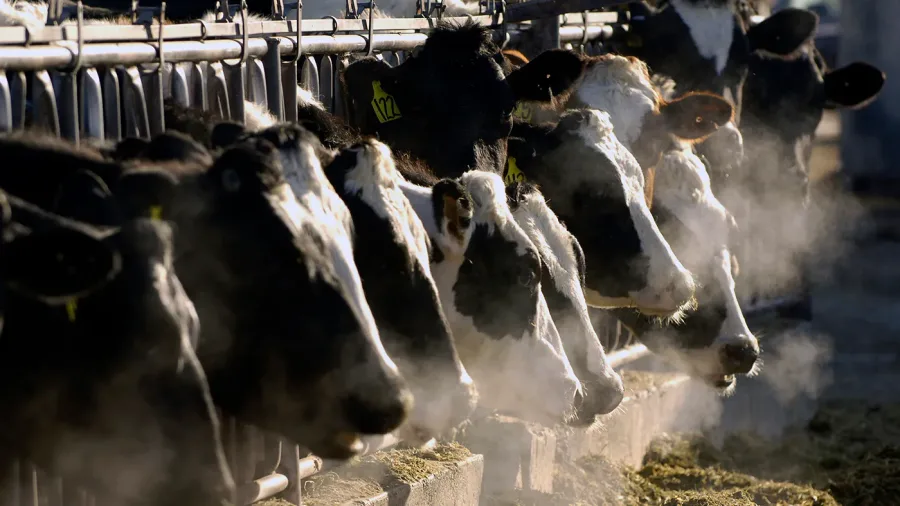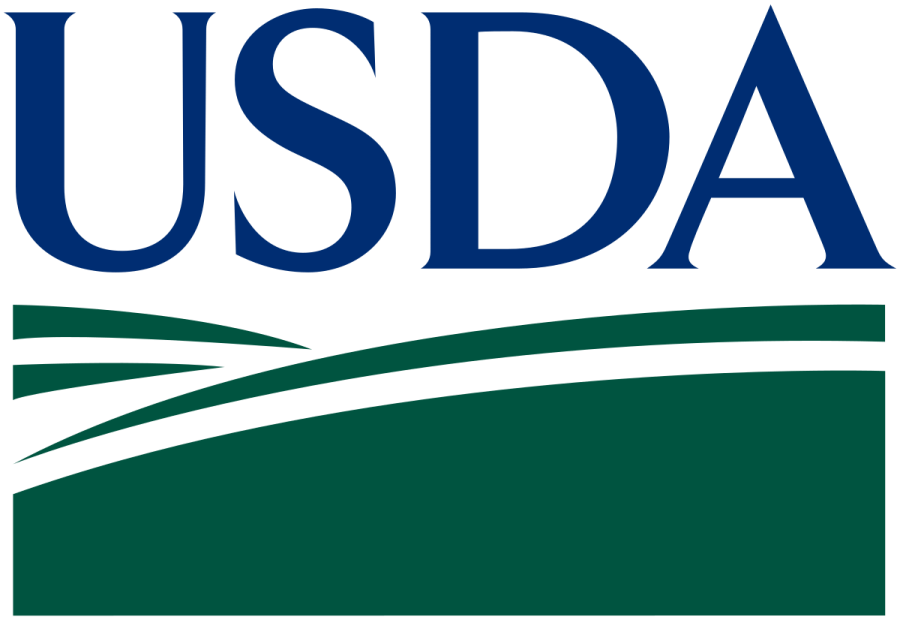Learn how Michigan is helping dairy farmers affected by avian flu with emergency funds and research. Can these steps control the crisis and ensure safety?

Since March 29, 2024, a staggering 24 operations have tested positive for highly pathogenic avian influenza (HPAI), inflicting a severe blow on Michigan’s dairy producers. The state, recognizing the gravity of the situation, has swiftly mobilized emergency funds to aid affected farmers and advance disease research. Dr. Tim Boring, director of the Michigan Department of Agriculture, underscores the crucial work being done at the intersection of public health and animal welfare.
“Our HPAI-impacted farms have been immensely cooperative in Michigan’s one-health approach to combat this disease,” Boring says.
Michigan is not facing the HPAI epidemic alone. The state is providing $28,000 to up to 20 HPAI-infected farms for comprehensive research and inspections, a strategic move to halt the epidemic. This assistance is further bolstered by existing USDA funding, underscoring the coordinated effort between the state and the dairy industry to aid in recovery and prevent further spread.
HPAI’s Ripple Effect on Michigan’s Agriculture: A Chronological Insight
Since its onset, highly pathogenic avian influenza (HPAI) has left an indelible mark on Michigan’s agriculture. The first case was confirmed on February 22, 2022, at a Kalamazoo County home chicken farm. By the end of 2022, the virus had spread rapidly, leading to the depopulation of 21 chicken flocks, a testament to its virulence and the need for immediate action.
The fight continued, with another seven chicken flocks impacted in 2023. The issue worsened on March 29, 2024, when HPAI was verified at a significant commercial dairy facility in Montcalm County with over 500 cows. This underlined how easily the virus may cross-species, affecting dairy operations and poultry ones.
Eight poultry farms and twenty-three dairy plants have tested positive for HPAI since April 2024. Particularly impacted have been counties like Clinton, Gratiot, and Ionia. Ionia County noted illnesses in one private flock, three commercial hen-laying farms, and five dairy enterprises.
HPAI’s growth in Michigan fits a more significant trend influencing many animal species worldwide, complicating control attempts. Although dairy cows have largely non-fatal rates, there are questions about possible mutations compromising human health.
Emphasizing the need to control HPAI, Michigan’s approach consists of tight cooperation with federal and state authorities. The state’s financing for financial help and research highlights initiatives to lessen the virus’s effects on the agricultural sector and animal welfare.
The Complexity of HPAI’s Impact on Michigan Dairy Farms
The invasion of HPAI into Michigan’s dairy industries has presented complex problems. Although the virus causes symptoms like fevers, stiff feces, aberrant milk, and lower output, it is less lethal for dairy cows than poultry. These problems compromise the economic stability of the farms and the general state of the herd.
Infected cows are segregated into sick pens and treated with antibiotics and fluids to control the epidemic. This upends routine agricultural operations and requires extra labor and resources.
Milk output is affected. To guarantee safety, milk from cows positive for HPAI is removed from the commercial supply chain, resulting in significant losses and smaller profits for dairy producers.
Emergency Funding to Combat HPAI: Michigan Takes Action
Tim Boring, Director of the Michigan Department of Agriculture, has launched a critical emergency finance project addressing the significant obstacles dairy producers face from highly pathogenic avian influenza (HPAI). Each of the twenty HPAI-infected farms receives up to $28,000 from the state. This helps call on farmers to work with state and federal authorities for extensive epidemiological research and real-time dairy herd analyses. The money allows attempts at farm recovery and promotes studies on the dynamics of the illness. This state-level assistance augments USDA financial aid for dairy farms impacted by HPAI in Michigan.
Federal Collaboration Bolsters Michigan’s Response to HPAI with Ground-Level Interventions
The USDA’s emergency management and epidemiology specialists have been vital in helping Michigan combat HPAI in concert with government authorities. They allow the Michigan Department of Agriculture and Rural Development (MDARD) to supervise biosecurity policies and guarantee effective depopulation, supporting on-the-ground operations throughout impacted poultry plants.
Tracing and testing within dairy cows, the USDA epidemiology team analyzes real-time data to better grasp the virus’s spread and effect on public and animal health. Their efforts help build focused containment and recovery plans, supporting Michigan’s one-health strategy.
Michigan’s Integrated “One-Health” Response: Bridging Animal and Public Health
Integrating animal and public health issues, Michigan’s response to the HPAI epidemic epitomizes the “one-health” philosophy. For fast testing, tracking, and epidemiological studies, MDARD works with the USDA and other partners. This alliance guarantees public health safety and meets the demands of compromised dairy farmers. Using USDA emergency management teams emphasizes the level of collaboration. It helps to protect human health hazards as well as animal welfare. This strategy demonstrates Michigan’s will to safeguard its agriculture and minimize any risks to public health.
Inter-species Transmission: The Unseen Human Health Risk in HPAI Outbreaks
Although HPAI mainly affects birds, its potential harm to human health is excellent. Naturally zoonotic, it may go from animals to people. Though its main effect is on poultry and dairy cows, rare human cases—such as those seen in Michigan, where two dairy farmworkers developed HPAI—showcase the importance of alertness even in this regard. These illnesses highlight the need to care for everyone who comes close to sick animals.
The CDC classifies the public risk of HPAI transmission as minimal. The virus cannot readily infect humans or pass between individuals. Still, there is a danger of mutation and higher transmissibility. This emphasizes the need for a thorough “one-health” strategy to track and reduce HPAI risks.
Public health campaigns advise persons regularly exposed to possibly infected animals to have a seasonal flu vaccination. It lowers the likelihood of double infections with human and avian influenza A viruses even if it does not guard against H5N1 bird flu. This approach seeks to minimize effects on public health and support Michigan’s commitment to adequately controlling HPAI outbreaks.
Ensuring the Safety of Our Milk Supply: The Indispensable Role of Pasteurization in Combating HPAI
Amidst the challenges posed by HPAI, the safety of Michigan’s commercial milk supply remains uncompromised. The key lies in the rigorous process of pasteurization, which ensures the elimination of dangerous germs and viruses. These stringent guidelines, upheld by the USDA and MDARD, further enhance these safety measures, instilling confidence in the public health protection measures in place.
Governor’s Emergency Declaration: A Pivotal Step in Protecting Michigan’s Poultry and Dairy Sectors
Tim Boring’s “Determination of Extraordinary Emergency” enhanced Michigan’s defenses of its poultry and cattle sectors on May 1. Building on a federal mandate, this state directive emphasizes the grave danger of HPAI. It demands additional resources to stop its spread. The statement seeks to rapidly contain epidemics, minimizing financial damage to farmers and preserving public health. To strengthen Michigan’s agricultural resilience against future zoonotic threats, it underlines the importance of concerted effort, tight biosecurity, and quick reactions.
The Bottom Line
Highly pathogenic avian influenza (HPAI) invading Michigan’s dairy farms presents a significant threat. The state’s reaction emphasizes the gravity of the matter by including federal cooperation and emergency money. While bolstering dairy producers and safeguarding public health, efforts center on stopping the virus’s spread.
HPAI has seriously rocked Michigan’s dairy sector. Still, the state’s “one-health” approach—combining public health policies with animal rights—aims to address this problem adequately. From separating sick animals to guaranteeing milk safety via pasteurization, Michigan’s steps show a solid structure to control the situation.
Farmers, agencies, and the public must work together and be constantly alert. Regular animal handlers should consider getting seasonal flu shots to reduce their chance of concomitant infections with human and avian influenza viruses.
Being informed is vital. Stay current with the latest from connected agencies like the Michigan Department of Agriculture and Rural Development. Overcoming HPAI and protecting public health and agriculture depend on collective understanding and engagement.
Key Takeaways:
- Michigan has allocated emergency response funding to assist up to 20 HPAI-infected dairy farms, offering $28,000 each for complete epidemiological investigations and real-time longitudinal studies.
- The funding complements existing USDA support, reinforcing efforts to aid dairy farms in recovery and advance research on the disease.
- The state’s approach is a “one-health” strategy, addressing both animal and public health concerns by collaborating with federal, state, and local partners.
- Three USDA emergency management teams are assisting the Michigan Department of Agriculture and Rural Development (MDARD) in day-to-day responses at affected poultry facilities statewide.
- The virus, while more severe in poultry, can also affect dairy cows, causing symptoms like fever, stiff manure, abnormal milk, and reduced production.
- Michigan has seen two cases of dairy farmworkers recovering from HPAI, with a total of four cases in the U.S., although the CDC considers the risk to the general public low.
- Michigan’s Governor has declared an “extraordinary emergency” to protect the state’s poultry and livestock industries, enhancing the federal order issued by the USDA.
Summary:
Michigan has declared an emergency due to 24 operations testing positive for highly pathogenic avian influenza (HPAI), causing severe damage to dairy producers. The state has provided $28,000 to up to 20 HPAI-infected farms for comprehensive research and inspections. The state’s approach involves tight cooperation with federal and state authorities, with the state financing for financial help and research focusing on reducing the virus’s effects on the agricultural sector and animal welfare. The CDC classifies the public risk of HPAI transmission as minimal, but there is a danger of mutation and higher transmissibility. Public health campaigns advise individuals to have seasonal flu vaccinations and pasteurization to protect public health and agriculture.












